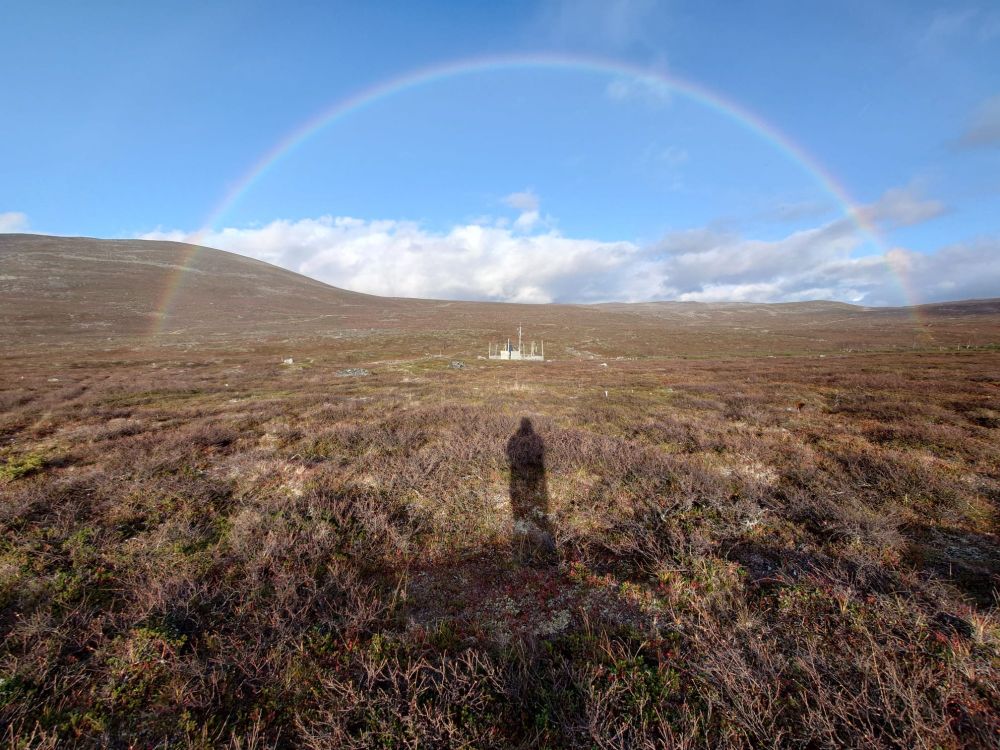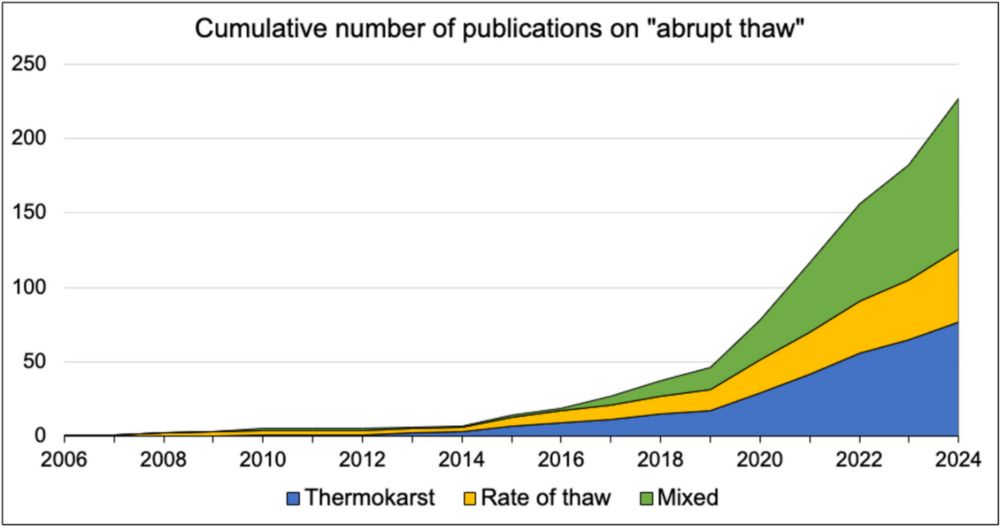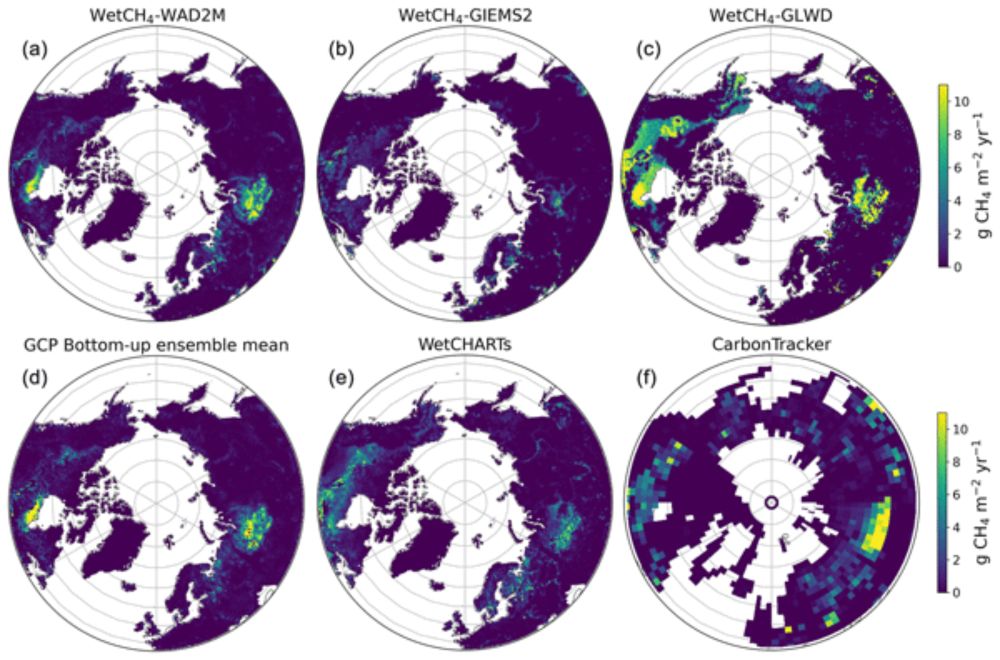
Make a difference this summer -- Join @cmshintani.bsky.social and me for an internship at @woodwellclimate.bsky.social and contribute to critical research on climate change.
Apply now: bit.ly/4l5D93W
25.03.2025 19:01 — 👍 31 🔁 15 💬 0 📌 3
" The sooner we reduce global greenhouse gas emissions, the sooner we can get the permafrost to refreeze," said Sue Natali.
Thanks @vivianla.bsky.social for covering this study!
30.01.2025 16:31 — 👍 10 🔁 7 💬 0 📌 0

Sinisellä pohjalla oleva Suomen maan äärirajat jonne on viivoilla lisätty tietoa eri säätapahtumista. Esim. vuoden alin lämpötila, vuoden suurin lumensyvyys ja vuoden kovin tuulennopeus.

Pylväsdiagrammi Suomen keskilämpötilasta. Keskimääräistä kylmemmät vuodet ovat sinisellä ja lämpimämmät punaisella. Musta viiva kuvaa liukuvaa 10 vuoden keskiarvoa.
Vuoden 2024 ilmastovuosikatsaus on julkaistu!
www.ilmastokatsaus.fi/2025/01/30/i...
Katsauksesta löydät muun muassa:
- Säätapahtumat Suomessa ja maailmalla vuonna 2024
- Keskilämpötilan kehitys pitkällä aikavälillä Suomessa
- Myrskypäivät Suomen merialueilla
- Itämeren merilämpöaallot
30.01.2025 16:48 — 👍 38 🔁 12 💬 0 📌 0
We are so grateful for everyone's engagement and great questions on this study! We want to address a few of the main ones that have appeared 🧵
29.01.2025 16:15 — 👍 14 🔁 9 💬 1 📌 1

We are looking for a grant-funded doctoral resarcher on a project focusing on how tree and shrub expansion into the tundra impact biodiversity and carbon balance @Department of Geosciences and Geography @helsinkiuni.bsky.social! DM me if you are interested, and please share!
28.01.2025 10:57 — 👍 27 🔁 24 💬 0 📌 2
📢New paper🚨Excited to share our new review paper in @plosclimate.org on Browning events in Arctic ecosystems! 🌿❄️ A wonderful collaboration, brilliantly led by @garethphoenix.bsky.social. 🌿@naturvetenskap.bsky.social @vetenskapsradet.bsky.social
27.01.2025 20:35 — 👍 13 🔁 6 💬 2 📌 0
That's terrible!
28.01.2025 06:28 — 👍 0 🔁 0 💬 0 📌 0
🧊🔥 New paper @natclimchange.bsky.social: After millennia as a carbon deep-freezer for the planet, a third of the Arctic-boreal zone is now a CO2 source to the atmosphere. The int’l research team was led by @annvirkk.bsky.social
⬇️ Learn more:
permafrost.woodwellclimate.org/after-millen...
21.01.2025 17:32 — 👍 232 🔁 134 💬 7 📌 11

Map of areas that experienced ecosystem climate stress in the Arctic-boreal region between 1997-2020 as detected by multiple variables including satellite data and long-term temperature records. Watts et al., 2025, Geophysical Research Letters
New paper in @agu.org Geophysical Research Letters: Detecting #Arctic hotspots using satellite and temp records shows extreme warming, drying and browning in Siberian forests and other areas of high ecosystem #climate stress in northern #Alaska & Northwest Territories of #Canada. #AGUPubs #GIS
a 🧵:
16.01.2025 14:32 — 👍 44 🔁 17 💬 2 📌 1

Job advertisement
📣 Open PhD position in new #ERCStG project COLDSPOT. Are you interested in exploring processes regulating CH4 and N2O sinks in #permafrost soils? Excited to join Arctic field campaigns? Applying biogeochemical and microbial techniques? Come work with us! tinyurl.com/mu8fhscm
@cenunihh.bsky.social
28.11.2024 10:38 — 👍 2 🔁 1 💬 0 📌 1
Politicians left unattended will be sold to the circus ✊🏻
Doctoral Researcher at the University of Helsinki working on Borealization's impact on Carbon Cycling in Northern Ecosystems
Doctoral researcher at the University of Helsinki looking into Arctic biodiversity
Global Change Biology is a journal that exists to promote understanding of the interface between environmental change & biological systems.
Coordinated analysis of long-term ecological data to understand impacts of global change.
Geographer asking ecological questions 🍃☘️🌿 Assistant professor in biodiversity change at University of Helsinki 🏔️ Subject editor at Oikos helsinki.fi/biodiversity-change
Est. 1917
https://linktr.ee/uafairbanks
Tuotamme tietoa tulevaisuuden turvaksi – olosuhteet eivät saa yllättää ketään.
www.ilmatieteenlaitos.fi
The UK’s independent adviser on tackling climate change.
https://www.theccc.org.uk/
Intergovernmental Panel on Climate Change
Ecosystem Scientist | Artist | Forests, Wetlands, Peatlands, & Climate Change | Carbon, Moss, Lichens, Permafrost, Fire, Tea | Science-Policy | she/her
Ecosystem biogeochemist, interested in understanding how carbon moves between plants, soil and atmosphere.
Stirling, Scotland.
Views my own, yadi-yady-yada.
European Geosciences Union is the leading organisation supporting Earth, planetary & space science researchers in Europe. #EGU26 3-8 May 2026. Online Mon-Fri 10-5 CET.
European Space Agency's Climate Team, often posting about ESA's Climate Change Initiative programme - climate.esa.int
Researcher in Weather and Climate Change Impact Research in Finnish Meteorological Institute. PhD in meteorology.
Dad, Ecologist, Lake lover, Member of the Church of Jesus Christ of Latter-day Saints
We are the Biometeorology lab at UC Berkeley.
We report on biogeoscience pubs + news on ecosystems, climate, California agriculture/water/energy/food/weather nexus, discus & soccer + defend our constitutional form of govt
Connecting and supporting early career researcher peatland scientists worldwide through networking, skill sharing, and collaboration.
peatecr.com
PhD in Physical Geography. Postdoctoral researcher at Aalto University. Peatlands and remote sensing
Putting science on the map at Woodwell Climate Research Center | Cartographer | Analyst | Senior Research Associate | Fly fisher | located in Woods Hole, MA, USA














